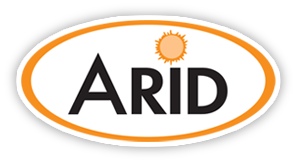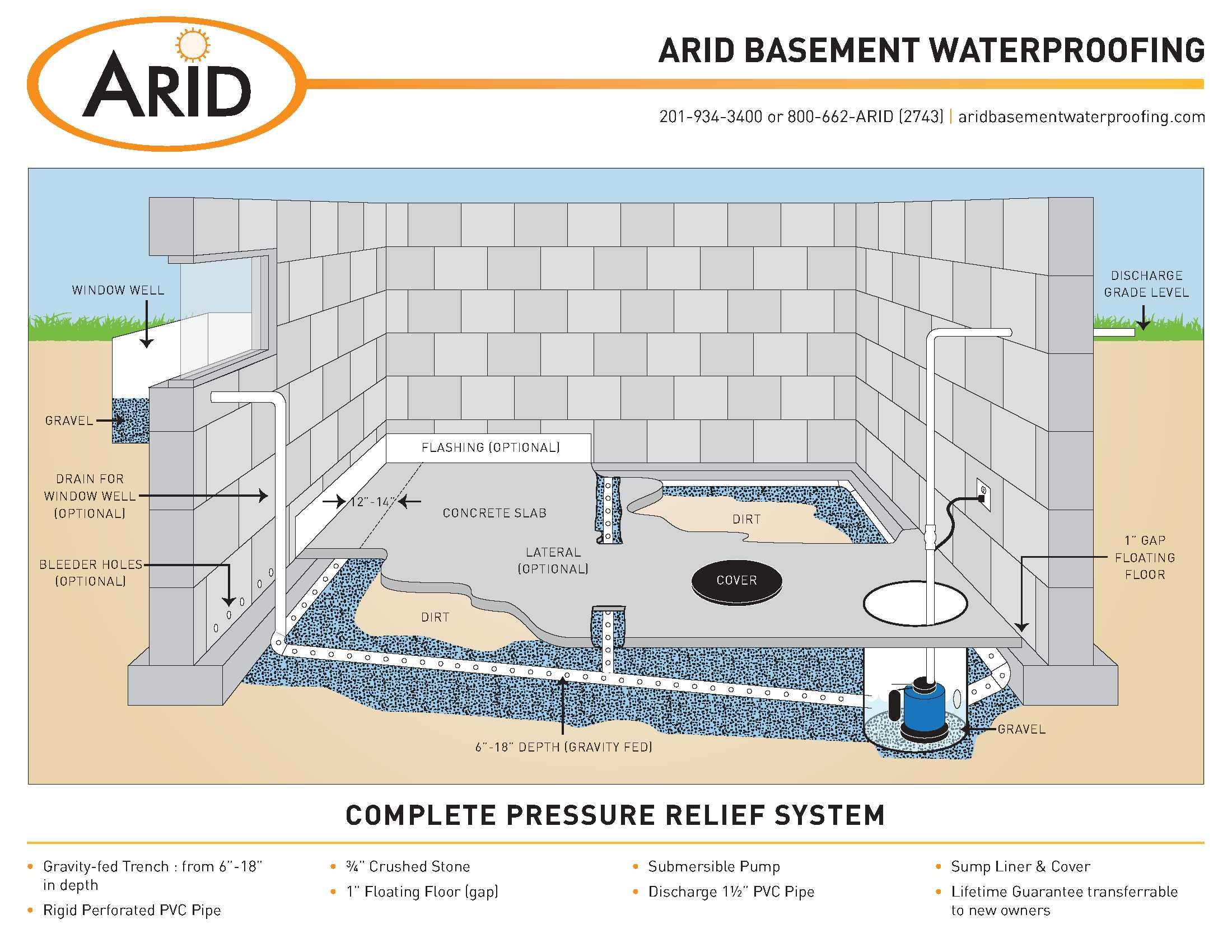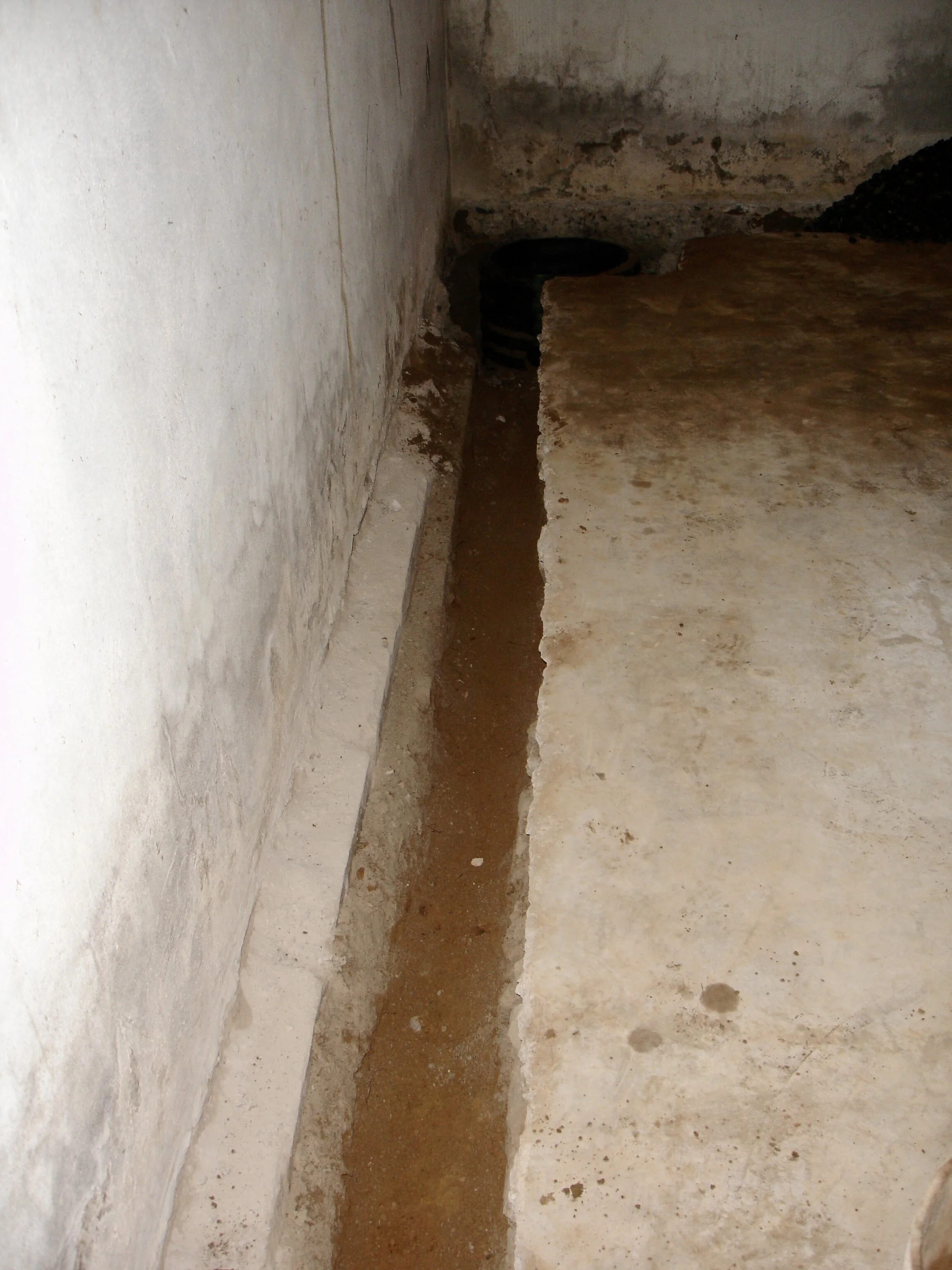
Arid Basement Waterproofing's primary means of waterproofing a structure – be it residential or commercial – against ground water seepage is the French drain. An integrated solution that includes a French drain and a sump pump is the only permanent solution to basement flooding.
FRENCH DRAINS
SUMP PUMPS
DRIVEWAY GRATES
French Drain Installation
A properly designed and installed French drain system is the only complete and permanent solution to ground water intrusions in your basement.
Water always flows downhill, and by the easiest route possible. That's the basic concept behind a French drain; a slightly sloped trench filled with gravel and perforated pipe that's used to divert underground water and relieve hydrostatic pressure, extremely prevalent in the New York, New Jersey area, to prevent flooding in your basement.
To accomplish this, we begin by opening a 12" - 14" trench in the basement floor (Fig. 1). Typically the trench will be along the perimeter of the basement. However, the length and location of the trench varies depending on the unique circumstances on site.
A perforated PVC pipe (Fig. 2) is laid in the trench and covered with gravel. The PVC pipe will catch any water that comes up from under the foundation or down through the gravel. The trench is pitched so that the pipe will quickly vent any water to a sump (pit) where it is discharged from the house by a pump (Fig. 3).
Once in place the pipe and gravel are covered back up with cement to blend in with the existing floor. In most cases we leave a 1"gap where the floor and wall meet (Fig. 4). This opening allows any water that might come off the wall to bypass the floor and trickle into the French drain. That water filters through the gravel and is evacuated with the rest of the ground water. Depending on the construction of your finished basement walls, in many cases the 1" gap will not even be visible.
A French drain is the only way to truly stop groundwater seepage in your basement. The French drain was designed to do more than a sump pump, which only relieves the hydrostatic pressure in roughly a 5-foot circumference and simply expels water from your house after it has entered. The French drain addresses the core problem by relieving hydrostatic pressure below your entire house or wall(s) before the water enters your basement. It is the only way to completely and permanently stop ground water from flooding your basement and damaging your foundation.
GALLERY
Click image to enlarge
Sump Pumps
Sump pumps are used where basement flooding happens regularly where the water table is above the foundation of a home. Sump pumps send water away from a house to any place where it will no longer be problematic.
A sump pump is a submersible pump sitting in a sub-floor basin that's typically 18" x 24". It is used to expel water that has accumulated in a water collecting basin (sump) from your house through a 1.5" PVC pipe.
On its own, a sump pump can help keep a very specific area of your basement dry, if the water seeps in from a single spot. However, sump pumps are most effective when integrated into a basement waterproofing system that includes a French drain. The French drain funnels water from all problem areas in your basement to the sump pump so it can be removed before it can cause any damage.
An integrated sump pump system will reduce the strain on your foundation and provide your house protection from flooding.
Driveway Grates
If your house is situated at the bottom of a slope, a driveway grate will help protect your garage from flooding.
Houses that sit below a down-sloping grade often face a problem with rainwater cascading down their driveway and into their garage. Installing a driveway grate (Fig. 1) alleviates this problem by catching the water before it enters the garage and diverting it away from your house.
If water is not properly channeled it will collect in your garage and may eventually find its way out through your house or basement. With properly installed grates (Fig. 2), your property will be protected from water damage and surface water can be prevented from collecting outside your home.
GALLERY
Click image to enlarge











